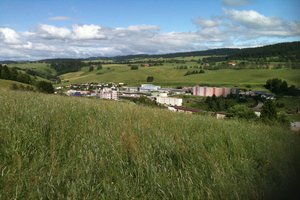News
Cross-border study on the Jura Arc
December 2013
In 2013, the MOT conducted a large-scale study aimed at defining the priority areas for the development of the French-Swiss Jura Arc. This cross-border territory encompasses the Franche-Comté Region and the Swiss cantons of Bern, the Jura, Neuchâtel and Vaud.
Led by the Franche-Comté Préfecture and arcjurassien.ch*, this initiative included a significant forward-looking dimension, starting with the production of a cross-border territorial analysis and resulting, on 19 December 2013 in Villers-le-Lac, in the presentation before the territory’s elected representatives and stakeholders of a cross-border development strategy for the Jura Arc.
This strategy puts forward cross-border orientations in the areas of economic development, mobility (public transport), regional planning, environmental management and public services. It also sets out a vision of cross-border cooperation that takes into account the interaction between the different territorial levels (going from very local urban and environmental cooperation through to an overview of the region as a whole, by way of cooperation between networks of towns and between French departments and Swiss cantons). Lastly, it puts forward ideas for reforming the governance of the cross-border structure, the Conférence TransJurassiennne, with greater involvement from the different levels of government. These strategic orientations must lead to the setting up of concrete projects: the study therefore proposes around ten operational projects as a first step to implementing the cross-border strategy.
This strategy is the result of a long process during which the MOT met more than 100 stakeholders on either side of the border, ran four cross-border territorial workshops and produced an overview of the state of cross-border cooperation. This shared territorial analysis comprised a quantitative dimension (the territory, cross-border cooperation actions) but also a qualitative one (themes of cooperation under way; the advantages, opportunities, weaknesses and risks for the territory analysed; the interplay of stakeholders, etc.). Lastly, the assignment addressed specific points of analysis, such as the positioning of French government departments and the internal organisation of cooperation and issues that are particular to Switzerland.
* Association that groups together the four cantons.
Back to list
